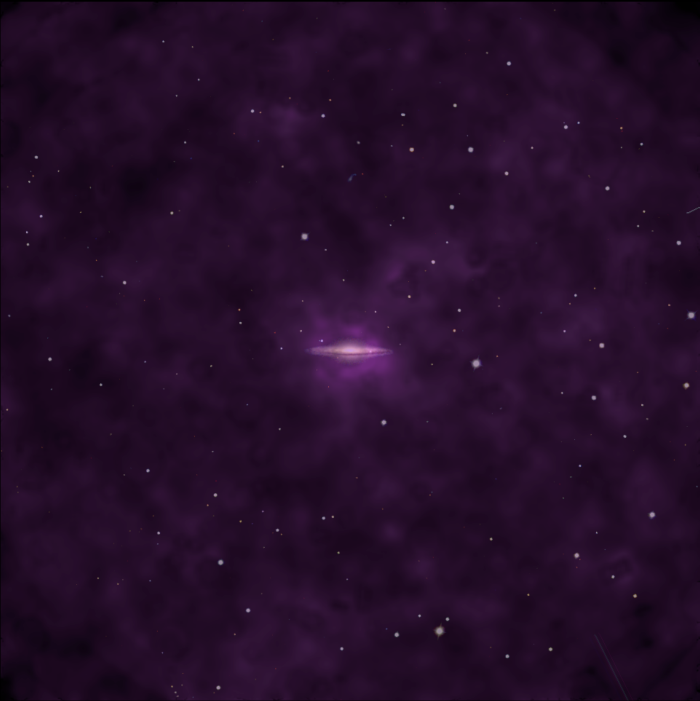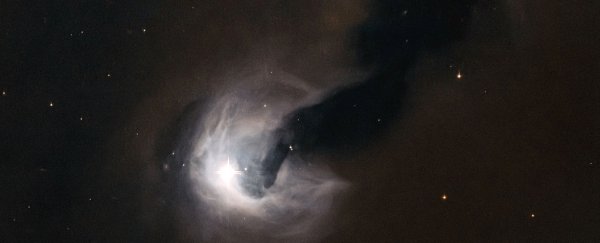Astronomers have just finished using an X-ray telescope to peer into galactic haloes, only to find Universe's missing matter isn't hiding there, either. But it's gotta be out there somewhere…
The Universe is made up of loads of matter. There's normal, or baryonic, matter - that's the stuff we can detect. Space dust and stars are baryonic matter. Plasma is baryonic matter. You're baryonic matter.
But there's much more mass in the Universe than can be accounted for by the amount of baryonic matter we can detect.
This shortfall is made up of dark matter. We don't know what it is exactly, but we know it exists because we can observe its gravitational effect on other objects in space, such as stars and galaxies.
Then there's the missing matter. Observations of nearby galaxies have found much less baryonic matter than there should be - about three times less. And the Milky Way galaxy seems to contain less than half the amount of baryonic matter that it should.
"This has long been a mystery, and scientists have spent a lot of effort searching for this missing matter," says Jiangtao Li of the University of Michigan, lead author of a new paper describing the latest search.
"Why is it not in galaxies - or is it there, but we are just not seeing it? If it's not there, where is it? It is important we solve this puzzle, as it is one of the most uncertain parts of our models of both the early Universe and of how galaxies form."
One theory is that the missing matter is in regions of hot gas surrounding galaxies known as the circumgalactic medium (CGM).
However, because it is so diffuse, nearly invisible, the CGM is very difficult to study as its X-ray emissions are often indistinguishable from the background radiation.
To make the CGM X-rays more readable, Li and his team found six galaxies outside the Milky Way similar to each other, and combined their data to create a simulated galaxy that averaged out their properties.
"By doing this, the galaxy's signal becomes stronger and the X-ray background becomes better behaved," says co-author Joel Bregman, also of the University of Michigan.
"We were then able to see the X-ray emission to about three times further out than if observing a single galaxy, which made our extrapolation more accurate and reliable."
 Stacked dataset of extended CGM X-ray emissions. (ESA/XMM-Newton/J-T. Li/SDSS)
Stacked dataset of extended CGM X-ray emissions. (ESA/XMM-Newton/J-T. Li/SDSS)
You know what happens next. Although they extended the CGM out to almost 30 times the Milky Way's radius, the team could only account for about 25 percent of the matter they were expecting to find. The rest? Still missing.
Which means it's probably somewhere else.
This could be a gas phase that's poorly observed, perhaps hotter and more tenuous or cooler and denser than what astronomers are looking at.
Or it could be in a region of space that we don't generally look at; or it is emitting X-ray radiation that's too faint to pick up.
Because it's not in galaxies, they may have ejected it out into space somehow.
But we may be waiting a while to find out - because we haven't detected it, we may need more sensitive instrumentation than what we have right now, such as NASA's upcoming high-resolution X-ray observatory Arcus, currently in the planning stages, and hopefully launching in 2023.
The ESA is also developing a high-resolution X-ray telescope, Athena, scheduled to launch in 2028.
"This work is important to help create more realistic galaxy models, and in turn help us better understand how our own Galaxy formed and evolved," says Norbert Schartel, ESA XMM-Newton project scientist.
"In the future, scientists can add even more galaxies to our study samples and use XMM-Newton in collaboration with other high-energy observatories .. to probe the extended, low-density parts of a galaxy's outer edges, as we continue to unravel the mystery of the Universe's missing matter."
The research has been published in Astrophysical Journal Letters.
